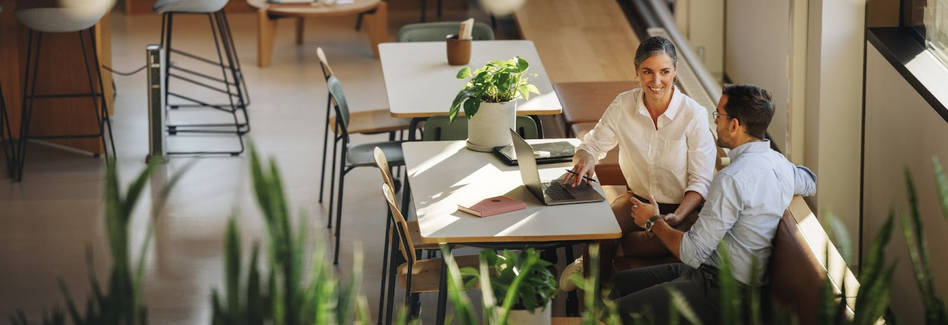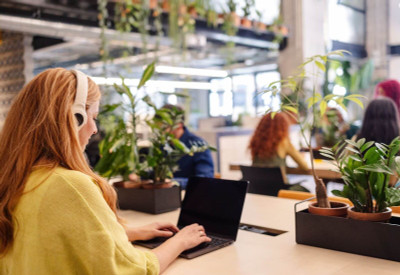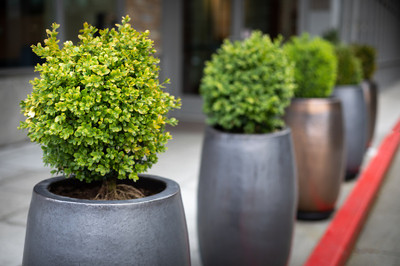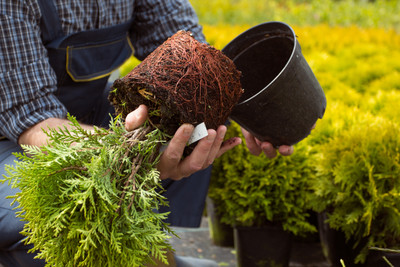Elevate Your Commercial Building with Biophilic Design Concepts
Posted by Jason Wyrwicz on Oct 24th 2025
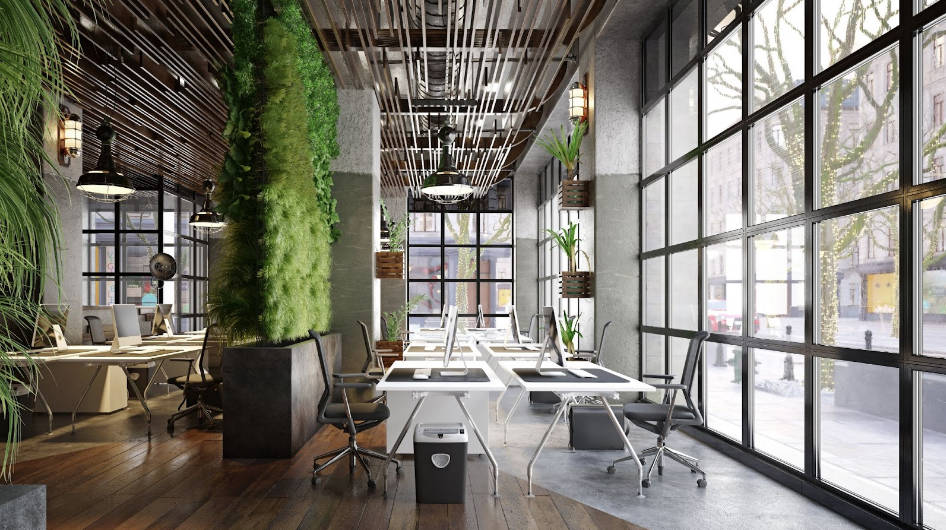
Sustainable designs in commercial buildings are a trend noticeable in many modern architectures. Imagine walking into a lobby filled with natural light and live greenery. It instantly boosts your mood, right?
This shift from bare walls to offices filled with greenery, natural light, and a sense of calm is made possible through biophilic design.
It allows for the combination of wellness, sustainability, and productivity together in commercial offices, hotels, and public buildings.
If you’re looking for commercial building interior design ideas that integrate greenery and natural light effortlessly, then keep reading.
Why Biophilic Design Matters
A biophilic design is one that incorporates natural elements and creates a sense of life in the built environment.
The trend became popular for obvious reasons, particularly because people need to be in contact with nature. As a result, being surrounded by something as simple as a planter with foliage significantly boosts productivity in the workplace.
In addition to better performance, biophilic design leads to other, equally important benefits:
Supporting Wellbeing
Natural light, plants, and flowing air have an impact on the way people feel and perform. Research shows that these elements reduce stress , sharpen focus, and boost creativity.
In workplaces, this translates into more engaged employees and a more positive daily atmosphere.
For hotels, it means guests feel immediately at ease and more connected to their surroundings.
|
Good to know: Biophilic design isn’t just a trend - it’s a proven strategy for healthier, more profitable buildings. |
Environmental Impact
Biophilic commercial building interior design often overlaps with sustainable design. While it is correct, biophilic interior design has a slightly different aim: it focuses on human experience.
At the heart of this approach is maximizing daylight to reduce reliance on artificial lighting and let natural light shape the space.
It can also be seen in features such as green roofs, courtyards, and rooftop gardens, which not only manage stormwater and support biodiversity but also create meaningful spaces for people to connect and recharge.

Economic Value
Sustainable, biophilic design can be both modern and profitable.
Tenants are willing to pay higher rents for offices that prioritize wellness and sustainability.
Hotels with strong biophilic features often attract more bookings and build stronger brand loyalty.
For property owners, these benefits add up to higher value, reduced vacancy, and stronger long-term ROI.
Core Principles of Biophilic Design
While every project is unique, most biophilic spaces are guided by three categories of experience:
-
Direct (plants, water, daylight, fresh air)
-
Indirect (natural materials, patterns, colors, art inspired by nature)
-
Spatial (prospect and refuge, wayfinding, connection to place)
The most effective commercial building interior design ideas don’t just apply these elements in isolation; they weave them together into an integrated whole, so that natural light, greenery, textures, and layouts complement one another for maximum impact.
|
Direct Experiences |
Indirect Experiences |
Space & Place |
|
Plants & planters |
Natural materials (wood, stone, wool) |
Prospect & refuge (views + cozy nooks) |
|
Green walls |
Nature-inspired art & patterns |
Wayfinding & clear sightlines |
|
Water features |
Natural colors (greens, browns, blues) |
Organized complexity (variety in shapes/spaces) |
|
Daylight |
Simulated natural light/air |
Cultural & ecological connection to place |
|
Fresh air |
Patina of time (materials that age gracefully) |
Sense of comfort & belonging |
Direct Experiences of Nature
Direct experiences are the most obvious and tangible ways we bring nature indoors. This includes:
-
Plants
-
Green walls
-
Planters
-
Water features
-
Daylight
-
Fresh air
All these elements create strong connections to the natural world and support employees’ health and well-being.
In addition to bringing people closer to nature, direct experiences stimulate various senses. The sound of flowing water or the feeling of a fresh breeze can have a positive effect.
Even something as simple as adding leafy planters to an office or lobby can reduce stress and improve air quality.
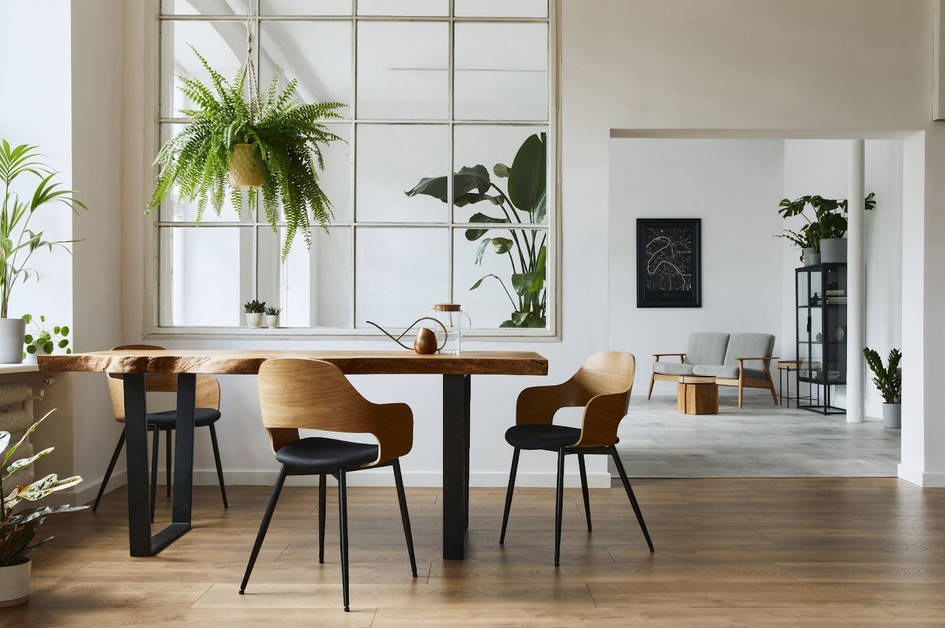
Indirect Experiences of Nature
If bringing planters indoors or placing a small fountain is not possible, indirect experiences offer a different solution.
It’s possible to create the same connection with nature, but through representation, materials, and patterns. This includes:
-
Natural materials: wood, wool, stone, bamboo.
-
Colors: earthy greens, browns, and blues.
-
Shapes and patterns: curves, fractals, biomimicry, and ornamentation inspired by leaves or waves.
-
Simulated natural light and air: biodynamic lighting systems or ventilation designs.
-
The patina of time: finishes and materials that age gracefully, reminding us of natural cycles.
Even without live plants, indirect touches of nature can have a big impact. Wall art inspired by nature or furniture with natural textures can make a plain space feel lively, welcoming, and more comfortable.
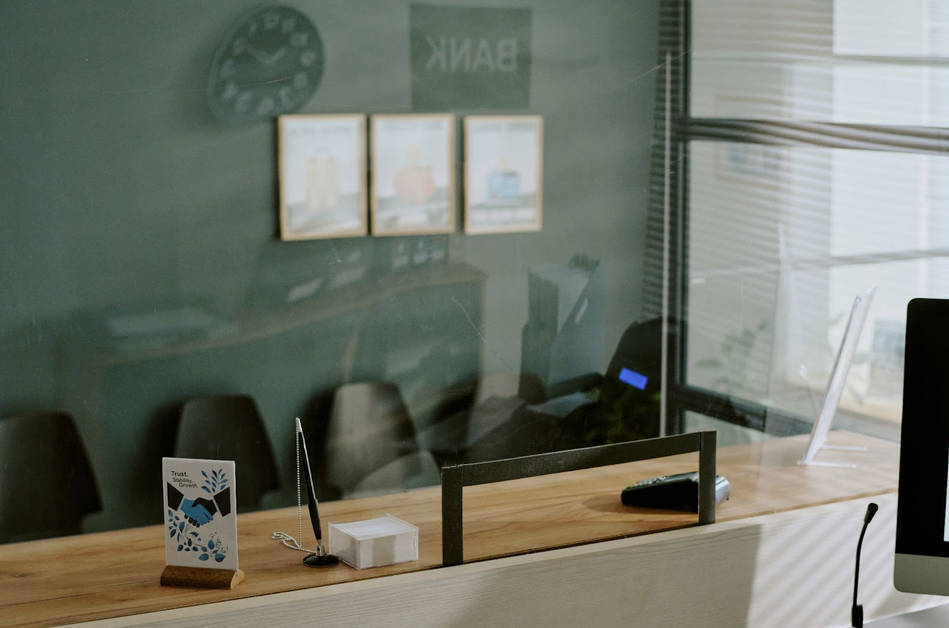
Experience of Space and Place
Spatial design is about how people move through and feel in a space, inspired by how we interact with nature. Key ideas include:
-
Prospect and refuge: open areas with views alongside small cozy spots for rest and privacy.
-
Wayfinding and movement: clear paths and sightlines that help people navigate naturally.
-
Organized complexity: a mix of shapes and spaces to keep the environment interesting.
-
Cultural and ecological connection to place: materials, plants, and features that reflect the local culture and natural surroundings.
Together, these spatial strategies create environments that feel both expansive and secure, encouraging comfort and belonging.
Real-World Examples
Biophilic design ideas sound great in theory, but in practice, they take on a new level of meaning when they transform everyday spaces into healthier, more inspiring places to live, learn, and work.
Here are some of the prominent projects that incorporated biophilic elements into a commercial building's interior design.
-
LaMercedes, Barcelona (Spain)
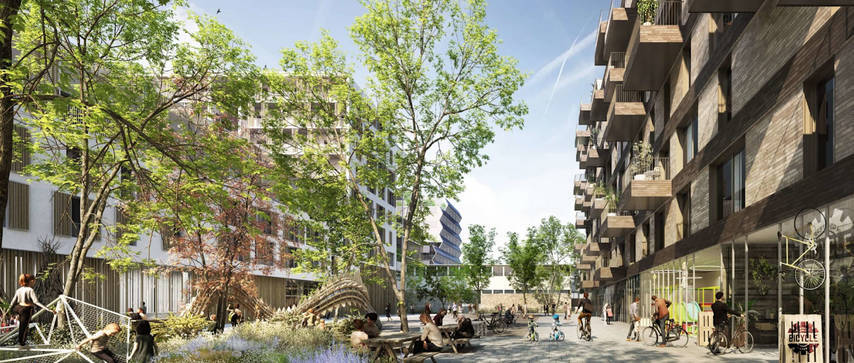
LaMercedes was an industrial factory that was transformed into Spain’s first eco-district. The development blends offices, housing, green public spaces, and car-free streets, creating a pedestrian- and cycle-friendly urban environment rich in greenery and natural materials.
-
Roots in the Sky, London (UK)
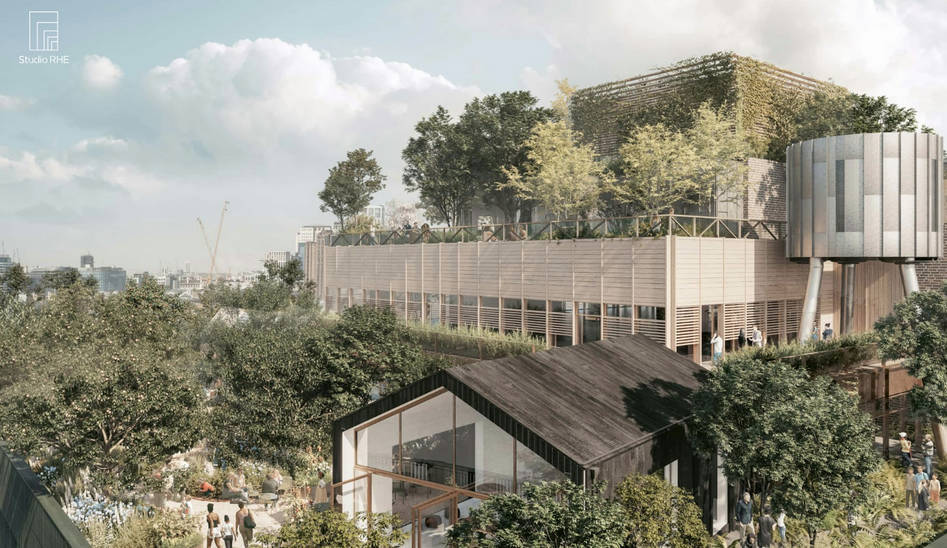
This regeneration project, designed by Studio RHE, turns a former courthouse into a mixed-use building with a 1.4-acre rooftop forest, passive ventilation, and natural light-filled workspaces. The rooftop garden invites community access and reconnects city life with biodiversity.
-
CapitaSpring, Singapore

A 51-story tower that combines offices, residences, and a four-story “green oasis.” The design integrates vertical gardens, outdoor spaces, and biophilic interiors, showing how nature can thrive even in dense urban centers.
Practical Tips for Implementation
Incorporating biophilia in an existing interior design for commercial buildings doesn’t require a full renovation. Knowing where to integrate the natural element will drastically shift the atmosphere in the hotel, office, and retail space.
1. Start Simple with Plants
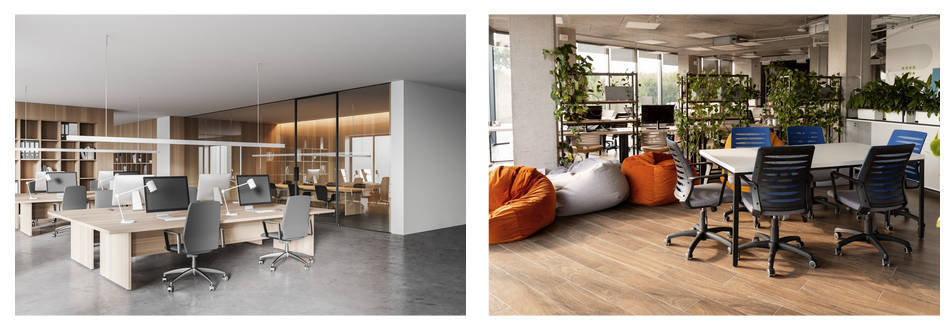
The most immediate way to bring nature inside is with greenery. Choose planters of different shapes and colors with plants to soften hard edges, improve air quality, and create a sense of calm.
-
Lobbies and lounges: large potted plants or small indoor trees provide visual anchors.
-
Workspaces: desk-friendly succulents or vertical herb planters reduce stress and improve focus.
2. Maximize Natural Light
Daylight is central to biophilic design, reducing dependence on artificial lighting and improving well-being.
The more natural light you let into your office, the better your employees' performance will be, not to mention the improved mood of clients and visitors.
-
Skylights and atriums: add light to interior spaces while cutting energy costs.
-
Unobstructed windows: clear heavy blinds or barriers to bring in more daylight.
-
Mirrors and reflective surfaces: bounce natural light deeper into a room.
3. Layer Experiences for Impact
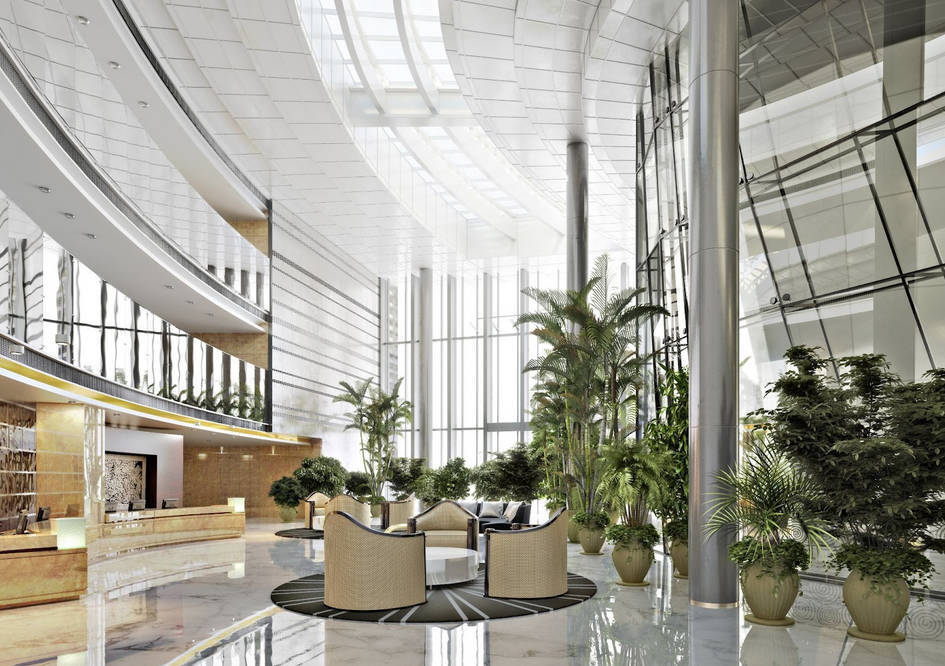
Nature works best when it engages multiple senses - sight, sound, and touch. Bringing these elements together in your workplace creates measurable benefits. Here’s how to make it happen:
-
Living walls + wood finishes: combine greenery with tactile natural materials. If not possible, large tree planters are a smart way to maximize space while still bringing greenery indoors.
-
Water features: fountains or indoor streams reduce noise pollution and promote relaxation.
-
Textures and patterns: stone, cork, or bamboo elements introduce warmth and variety.
4. Involve the People Who Use the Space
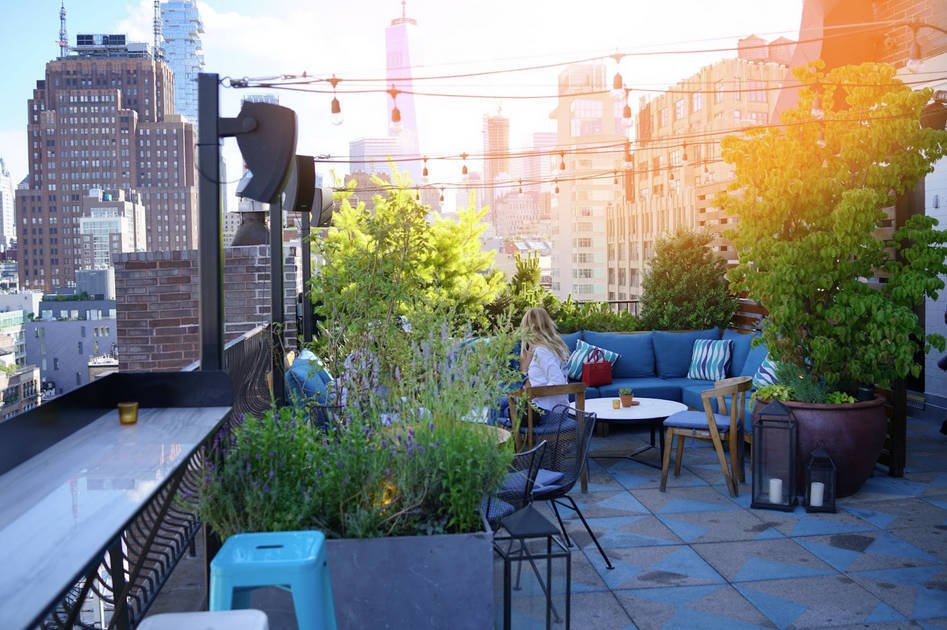
The benefits of biophilic design are strongest when people actively interact with it.
For instance, companies and hotels can encourage employees and guests to relax on a break in rooftop gardens, attend outdoor meetings, or even help care for the plants.
Biophilic design thrives when occupants feel invested in it.
-
Rooftop gardens: invite employees to participate in tending plants.
-
Community artwork: introduce nature-inspired murals, installations, or local plant varieties.
-
Wellness programs: integrate gardening or nature walks into workplace initiatives.
5. Go Beyond Greenery
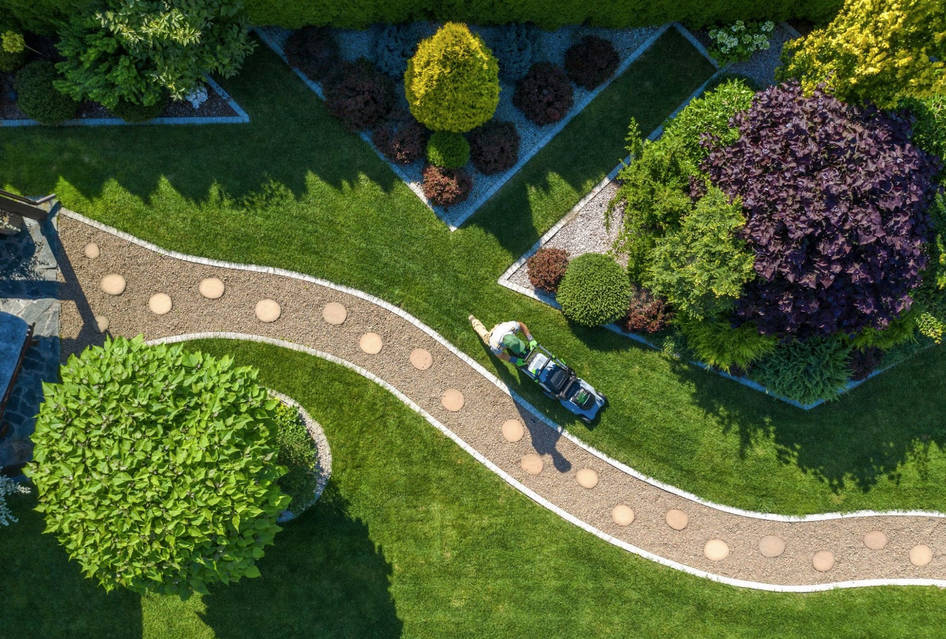
Biophilia is about nature, but it goes beyond adding plants to every empty space. The design aims to maximize fresh air and natural light and encourage people to connect with the place.
-
Natural ventilation: operable windows improve air circulation and cut HVAC costs.
-
Natural flow: pathways, courtyards, and layered sightlines guide movement intuitively.
-
Cultural connection: materials like reclaimed wood or locally quarried stone reflect local identity.
6. Track and Demonstrate the Impact
To make biophilic design sustainable for the long term, you can measure its tangible benefits. Here are the metrics to keep an eye on:
-
Energy metrics: monitor savings from natural lighting or ventilation.
-
Employee and guest surveys: capture feedback on comfort, satisfaction, and productivity.
-
Retention and performance: link design changes to improved workplace culture or customer loyalty.
Conclusion
The biophilic elements in interior design for commercial buildings are not going anywhere. Their potential and promising benefits are both profitable and sustainable.
These spaces are profitable because employees and guests in nature-inspired environments feel healthier, more focused, and in better moods.
Sustainability is achieved by maximizing natural light and fresh air, reducing reliance on artificial systems and energy-intensive technology.
The good part is that the transformation doesn’t need to happen all at once. Start with something as simple as planters in a lobby or natural finishes in a meeting room. Over time, those small steps will evolve into a building-wide culture of wellness and sustainability.
|
If you’re ready to bring biophilic design into your commercial area, explore our collection of indoor and outdoor planters . It’s an investment in people, in the planet, and in long-term profitability. |
